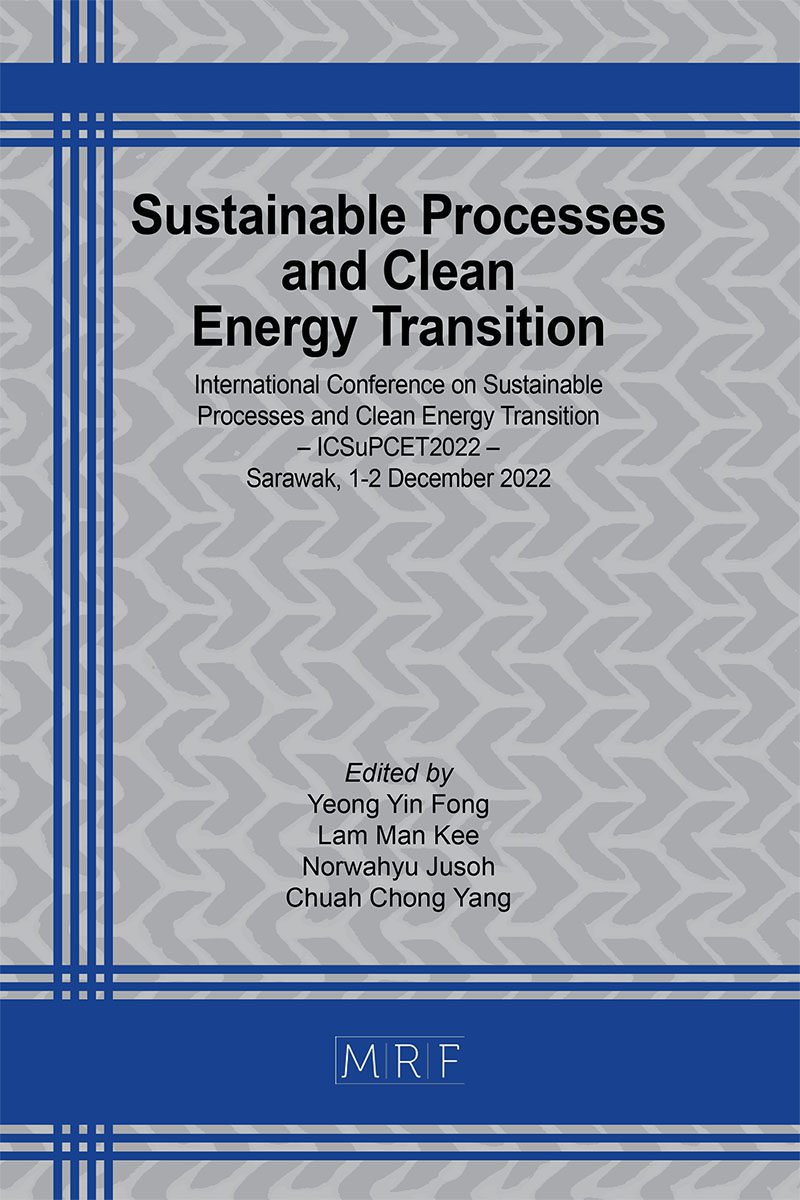Fuel-synthesis wastewater treatment and purple non-sulfur bacteria biomass and pigments production: Effect of vitamin concentration
SULTAN Shaikh, NAIM Rashid, GORDON McKay, HAMISH R. Mackey
download PDFAbstract. The effect of different concentrations of ATCC vitamin supplement on the production of purple non-sulfur bacteria biomass (suspended and biofilm), carotenoids (Crts) and bacteriochlorophylls (BChls) from fuel-synthesis wastewater (FSW) was investigated in this study. The results suggest that maximum COD removal (3465 ± 125 mg/L) from FSW was obtained at a vitamin media concentration of 10 mL/L. The best optimal condition for increased biomass production from suspended and biofilm culture is the addition of vitamin at concentrations of 20 mL/L and 10 mL/L, respectively. The optimum condition for maximum Crts and BChls production from suspended and biofilm culture was found as 5 mL/L and 0 mL/L, respectively. Hence, the biomass response to vitamins is complex and vitamin addition can be used to prioritize different end goals with purple-non sulfur bacteria treatment systems and biomass utilization.
Keywords
Fuel Synthesis Wastewater, Purple Phototrophic Bacteria, Carotenoids, Bacteriochlorophylls, Vitamins, Micronutrients
Published online 5/20/2023, 6 pages
Copyright © 2023 by the author(s)
Published under license by Materials Research Forum LLC., Millersville PA, USA
Citation: SULTAN Shaikh, NAIM Rashid, GORDON McKay, HAMISH R. Mackey, Fuel-synthesis wastewater treatment and purple non-sulfur bacteria biomass and pigments production: Effect of vitamin concentration, Materials Research Proceedings, Vol. 29, pp 344-349, 2023
DOI: https://doi.org/10.21741/9781644902516-38
The article was published as article 38 of the book Sustainable Processes and Clean Energy Transition
![]() Content from this work may be used under the terms of the Creative Commons Attribution 3.0 license. Any further distribution of this work must maintain attribution to the author(s) and the title of the work, journal citation and DOI.
Content from this work may be used under the terms of the Creative Commons Attribution 3.0 license. Any further distribution of this work must maintain attribution to the author(s) and the title of the work, journal citation and DOI.
References
[1] H. Lu, G. Zhang, X. Dai, L. Schideman, Y. Zhang, B. Li, H. Wang, A novel wastewater treatment and biomass cultivation system combining photosynthetic bacteria and membrane bioreactor technology, Desalination. 322 (2013) 176–181. https://doi.org/10.1016/j.desal.2013.05.007
[2] H. Wang, A. Yang, G. Zhang, B. Ma, F. Meng, M. Peng, H. Wang, Enhancement of carotenoid and bacteriochlorophyll by high salinity stress in photosynthetic bacteria, Int. Biodeterior. Biodegrad. 121 (2017) 91–96. https://doi.org/10.1016/j.ibiod.2017.03.028
[3] H. Lu, G. Zhang, Z. Zheng, F. Meng, T. Du, S. He, Bio-conversion of photosynthetic bacteria from non-toxic wastewater to realize wastewater treatment and bioresource recovery: A review, Bioresour. Technol. 278 (2019) 383–399. https://doi.org/10.1016/j.biortech.2019.01.070
[4] C. Rudolf, H. Grammel, Fructose metabolism of the purple non-sulfur bacterium Rhodospirillum rubrum: Effect of carbon dioxide on growth, and production of bacteriochlorophyll and organic acids, Enzyme Microb. Technol. 50 (2012) 238–246. https://doi.org/10.1016/j.enzmictec.2012.01.007
[5] Z. Aksu, A. Tuǧba Eren, Carotenoids production by the yeast Rhodotorula mucilaginosa: Use of agricultural wastes as a carbon source, Process Biochem. 40 (2005) 2985–2991. https://doi.org/10.1016/j.procbio.2005.01.011
[6] C. Paliwal, I. Pancha, T. Ghosh, R. Maurya, K. Chokshi, S. V. Vamsi Bharadwaj, S. Ram, S. Mishra, Selective carotenoid accumulation by varying nutrient media and salinity in Synechocystis sp. CCNM 2501, Bioresour. Technol. 197 (2015) 363–368. https://doi.org/10.1016/j.biortech.2015.08.122
[7] Q. Zhou, P. Zhang, G. Zhang, Biomass and carotenoid production in photosynthetic bacteria wastewater treatment: Effects of light intensity, Bioresour. Technol. 171 (2014) 330–335. https://doi.org/10.1016/j.biortech.2014.08.088
[8] Q. Zhang, Z. Zhang, Biological Hydrogen Production From Renewable Resources by Photofermentation, 2018. https://doi.org/10.1016/bs.aibe.2018.03.001
[9] F.S. Kuo, Y.H. Chien, C.J. Chen, Effects of light sources on growth and carotenoid content of photosynthetic bacteria Rhodopseudomonas palustris, Bioresour. Technol. 113 (2012) 315–318. https://doi.org/10.1016/j.biortech.2012.01.087
[10] P.J. Boogaard, J.C. Carrillo, L.G. Roberts, G.F. Whale, Toxicological and ecotoxicological properties of gas-to-liquid (GTL) products. 1. Mammalian toxicology, Crit. Rev. Toxicol. 47 (2017) 121–144. https://doi.org/10.1080/10408444.2016.1214676
[11] S. Sali, H.R. Mackey, The application of purple non-sulfur bacteria for microbial mixed culture polyhydroxyalkanoates production, Rev. Environ. Sci. Biotechnol. 20 (2021) 959–983. https://doi.org/10.1007/s11157-021-09597-7
[12] APHA, Standard methods for the examination of water and wastewater, 2012. https://doi.org/10.5860/choice.49-6910
[13] HACH, Oxygen Demand, Chemical. USEPA reactor digestion method, HACH Method 8000. (2019) 1–6. https://www.hach.com/asset-get.download-en.jsa?id=7639983817
[14] S. Chumpol, D. Kantachote, T. Nitoda, H. Kanzaki, Administration of purple nonsulfur bacteria as single cell protein by mixing with shrimp feed to enhance growth, immune response and survival in white shrimp (Litopenaeus vannamei) cultivation, Aquaculture. 489 (2018) 85–95. https://doi.org/10.1016/j.aquaculture.2018.02.009
[15] Q. Zhou, P. Zhang, G. Zhang, Biomass and pigments production in photosynthetic bacteria wastewater treatment: Effects of light sources, Bioresour. Technol. 179 (2015) 505–509. https://doi.org/10.1016/j.biortech.2014.12.077































